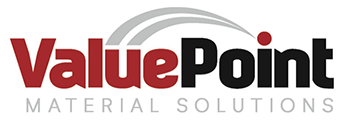Tier 1 Automotive Manufacturer
MI Complex Heavy Machining
3.1M Sq Ft Manufacturing Space on 410 Acres
4800+ Associates
$50M Annual Indirect Spending

WHAT
Offsite Crib Consolidation
Indirect/MRO Dedicated Warehouse
Struggling with the need for added manufacturing floor space as well as significant financial inventory losses and material availability failures thru self-management, ValuePoint’s customer needed a better approach.

HOW
Already the outsourced provider for Indirect procurement and systems, ValuePoint in collaboration with its customer initiated the physical inventory and consolidation of 6 onsite indirect crib locations to a single ValuePoint offsite indirect Central Distribution Center. Over a period of 8 months, 7 individual indirect storerooms totaling over 200,000 sq ft of floor space were consolidated into a single offsite warehouse of 73,000 sq ft.
Low dollar, high turn materials were established in onsite ValuePoint managed POU areas for quick access while the balance of all indirect material was taken to the CDC within 8 minute drive time. An emergency machine down delivery process was developed resulting in 24/7 fast availability of goods to support manufacturing while the balance of both inventory and cross docked spot buy needs were delivered daily via standard milk runs.

RESULTS
The physical inventory and relocation exercise corrected some $8M in net inventory errors on over $48M in indirect inventory (110,000-part numbers). Additionally, over the following 3 years, the consolidation of materials, standardization, communization, and increased controls resulted in an inventory reduction of $10M.
The headcount required to operate the CDC vs the onsite cribs dropped from 26 customer employees to 16 ValuePoint Team members providing 5/24 coverage. Each day ValuePoint supports the manufacturing floor by making machine down emergency deliveries to the end user as well as one single standard delivery milk run with non-emergency material and spot buys. Inventory error levels dropped from over 17% to less than 2%, directly resulting in millions in savings between write off reductions and operational availability improvements.

